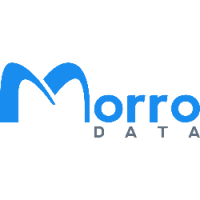The Evolution of Storage from On-Premise to Cloud
The Evolution of Storage from On-Premise to Cloud
A recent article of the same title in the Network World Better Storage for Better Business column, guest contributed by Paul Tien, Morro Data CEO, highlighted the storage evolution to cloud.
Cloud NAS – NAS (Network Attached Storage) Replacement
In this blog, we expand on how the Morro Data CloudNAS, with its hybrid-cloud architecture, is the next step in the storage modernization evolution.
The advent of computer collaboration was the mainframe computer. Mainframe users accessed centralized compute and storage via remote terminals. The introduction of time sharing allowed permanent real-time access by different departments or even companies. In some sense mainframes were the first instances of cloud computing.
With the advent of mini-computers and PCs, computing became distributed. While this brought many benefits in performance and scheduling, the downside was storage was now localized to each computer creating data silos and hindering collaboration.
Challenges of An On-Premises Environment
File Servers and NAS (Network attached Storage) restored centralized storage enabling many users to share and access data and for a while this was sufficient.
Before long new challenge emerged
- The rapid growth in unstructured data “…According to IDC Research, digital data will grow at a compound annual growth rate (CAGR) of 42% through 2020. In the 2010-2020 decade, the world’s data will grow by 50X; i.e., from about 1ZB in 2010 to about 50ZB in 2020…”
- Distributed workforces and ecosystems meaning sharing data within a single office or company is no longer sufficient.
The first challenge meant on-premises storage quickly runs out of capacity requiring constant upgrades. Add in 3-2-1 backup and maintenance activities, and just managing the storage becomes a full-time chore for IT.
The second challenge led to the introduction of Enterprise File Sync and Share (EFSS) software which added another layer of complexity to managing storage islands.
Benefits of Hybrid Cloud Solution
Paul Tien, with his ReadyNAS product, had already brought centralized on-premises storage that was affordable and easy to use by SMEs. Fully aware of the challenges, he saw the opportunity for a ‘NAS 2.0’ storage modernization. By keeping the on-premises storage interface, while vaporising the drives into the cloud and adding a cloud-first global file system, the Morro Data CloudNAS was born.
With its hybrid-cloud architecture, the Morro Data CloudNAS
- retains the familiar drive letter user interface,
- gains all the benefits of cloud scalability and resilience
- provides centralized storage across multiple locations all managed from a single web-based console
And with full support for Azure Active Directory, users can use their existing Office 365 credentials to access the storage from any location simplifying access and increasing productivity for both users and IT managers.
